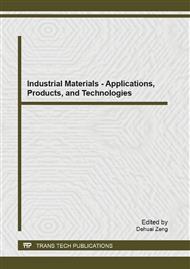p.106
p.111
p.117
p.125
p.131
p.136
p.142
p.148
p.155
Parallel Extrusion of Aluminum Alloy Heat Sink with Round-Fin
Abstract:
Parallel extrusion is a combined extrusion process for forming round-fin heat sink on thick metal sheets. In this paper, the parallel extrusion has been applied to manufacture the round-fin heat sink in the automotive lighting. Numerical simulations on the round-fin heat sink forming using the software DEFORM were carried out. The tooling structure with counterpressure on the heat sink formation was investigated. The results show that the tooling structure with counterpressure is helpful to the formation of round-fin heat sink, which not only ensures the height of each round-fin on the heat sink is uniform but also retards the initiation of flow-through on the reverse side of round-fin. In addition, the experiments of press forging process were conducted to validate the finite element analysis, it is shown that the friction at the punch-blank interface has more significant effect on preventing the initiation of flow-through compared with the friction at the die-blank interface, which implies that the punch-blank interface has more significant effect on the material flow in the formation of round-fin, and the simulation results are in good agreement with the experimental data.
Info:
Periodical:
Pages:
131-135
Citation:
Online since:
August 2013
Authors:
Price:
Сopyright:
© 2013 Trans Tech Publications Ltd. All Rights Reserved
Share:
Citation:


